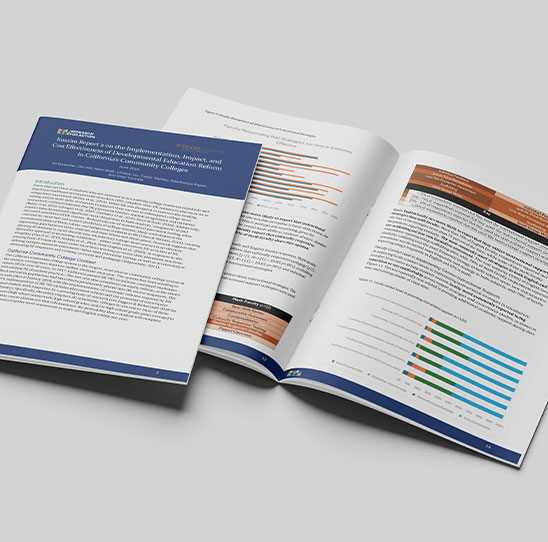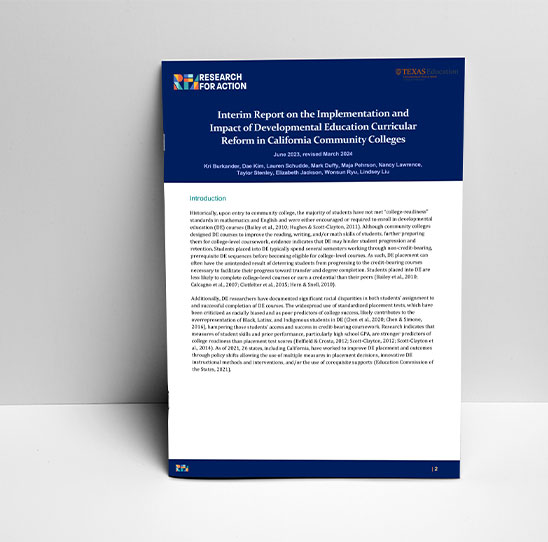When students enroll in community college, they are typically required to take placement tests to determine their readiness for college-level coursework. If these tests determine that students are not yet ready for college-level work, these students are often advised to enroll in developmental education coursework. Developmental education was designed to help students acquire the reading, writing, and mathematics skills needed to be successful in college-level coursework. However, research has shown that students frequently get stuck in extended developmental education sequences before college-level, losing momentum and failing to progress to credit-bearing courses, let alone completing a credential. Furthermore, research has demonstrated that students who are racially marginalized are often overrepresented in developmental education. In response to this research, many states and systems have been exploring reforms to developmental education placement practices. California’s Assembly Bill (AB) 705, passed in 2017 and taking effect in 2019, is one such reform.
In 2021, RFA was awarded a five-year, $3.2 million grant from the Institute of Education Sciences to study the implementation, impact, and cost effectiveness of AB 705. AB 705 requires all California community colleges to revise the criteria used to place incoming students in their first math and English courses. Colleges were required to discontinue the use of placement tests and instead rely on multiple measures assessment (including high school GPA) to maximize the likelihood that students enter and complete college-level (referred to as transfer-level in the California context) math and English within one year. In response to the reform, colleges were expected to phase out their developmental education sequences and encouraged to provide additional supports, such as corequisite courses and tutoring, to bolster student success.
RFA’s study explores how California’s community colleges implemented these reforms, recognizing that there was no prescribed approach. We want to know:
- What did colleges do?
- What were the opinions of faculty, administrators, and students?
- What were the challenges and how did colleges overcome them?
Our team, working with Dr. Lauren Schudde at the University of Texas at Austin, is also working to understand the impact and cost effectiveness of this policy. We want to know:
- What is the impact of being placed into transfer-level math or English instead of developmental education coursework?
- Are students receiving additional supports doing better than those who are not?
- Which student supports offer the best return on investment?
What have we found?
- Our first interim report describes approaches colleges used to revise their placement criteria and the development of additional student supports.
- Our second annual report highlights findings from our survey of math and English faculty regarding their instructional practices and mindsets. This report also presents findings from our interrupted time series analysis, which describes that while access to transfer-level math and English increased for all students, we are still seeing equity gaps in completion of these courses.
- We presented on a webinar with other field leaders discussing how placement reform can serve as a catalyst for institutional change.
- We have learned that corequisite courses vary significantly in how they are structured, which we describe in this brief.
- We also identified embedded tutoring as a common and promising practice, which we explore in this brief.

